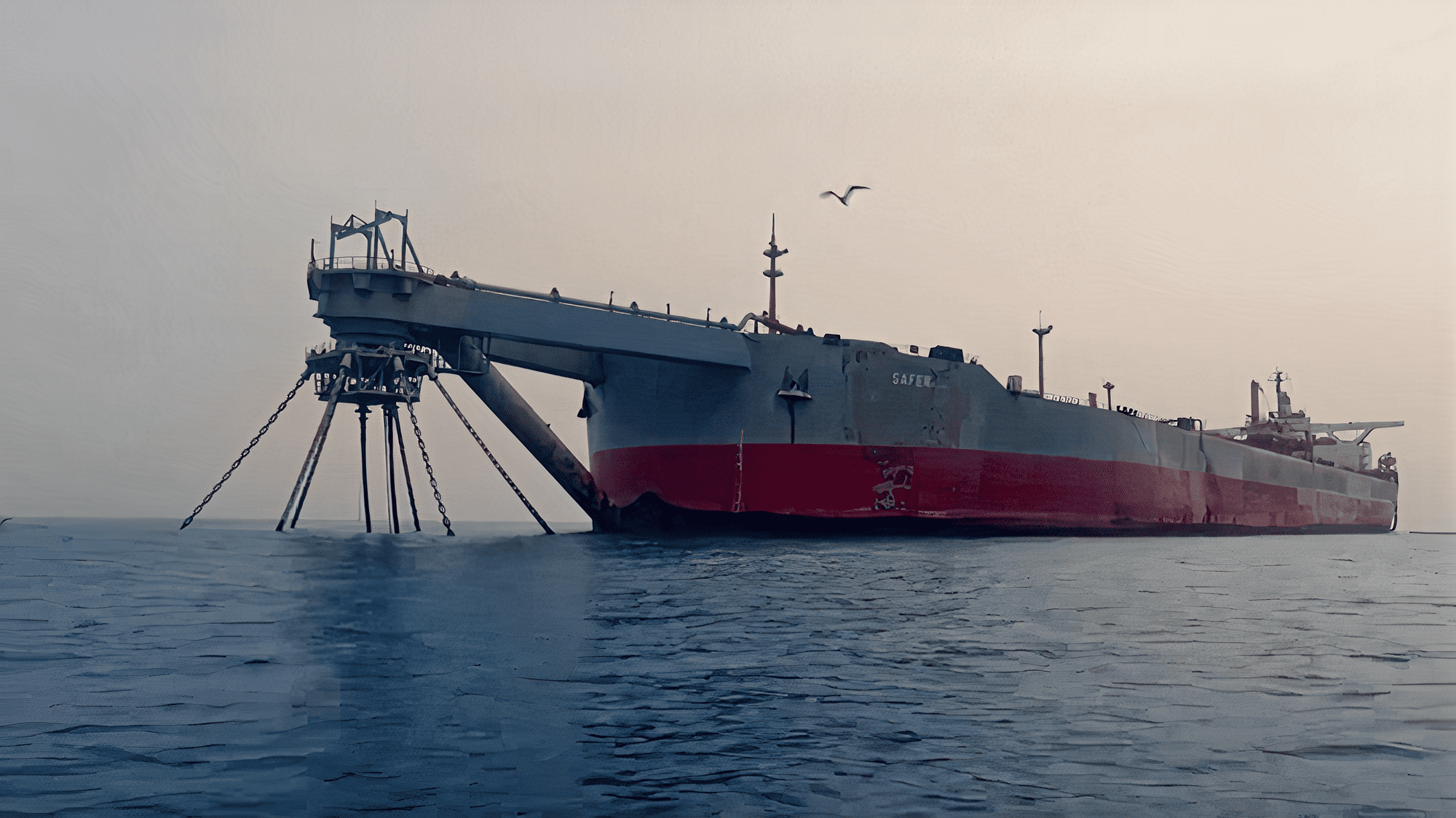The Safer reservoir is preparing to dispose of more than a million barrels of oil, after the arrival of a ship owned by the United Nations off the coast of Yemen, which could save the world from an imminent oil spill disaster, although the risks are still great.
The Safer tank, which is about 47 years old, has been moored off the Yemeni coast since the 1980s, when it was converted into a floating storage and offloading unit, and experts described it as a “time bomb” in the Red Sea due to the threat it carries of a humanitarian catastrophe.
It is expected that the delicate process of transferring 1.14 million barrels of light Marib crude to the ship “Nutica” – which was purchased by the United Nations in March 2023 – will begin in the coming days, according to what was seen by the specialized energy platform, quoting the “France 24” platform. 24).
UN officials expect it to take about three weeks to transfer the oil from Safer to Nautica – which set sail from Djibouti on Saturday.
Risks of an oil spill from the Safer reservoir
Despite rigorous safety checks, concerns remain about an oil spill or explosion, as the Safer tank holds 4 times the amount of oil that was spilled in the 1989 Exxon Valdez oil disaster off the coast of Alaska.
The danger is that no maintenance work has been carried out on the Safer reservoir since 2015, in addition to the prevention of international experts from accessing or inspecting it by the Houthi rebels for more than two years.
The project manager of the United Nations Development Program for the Safer Reservoir, Muhammad Mudawi, said, “The danger is great…the danger is very great,” expressing his hope that any danger will be eliminated after the completion of the project.
Mudawi stressed that ongoing concerns about the infrastructure of the Safer reservoir require oil pumping to begin during the day, at least 10 hours before sunset, to ensure that all connections are secure and leaks can be monitored.
Scorching summer temperatures, aging pipelines and sea mines lurking in the surrounding waters pose threats to the oil transfer, which has been in the works since late May by experts from the private company Summit Salvage.
The United Nations Humanitarian Coordinator for Yemen, David Gresley, told the Security Council on Monday (July 10, 2023) that the team had inspected the ship, arranged for the transfer of pumps and hoses, and pumped inert gas into the tanks to reduce the risk of an explosion.
Senior project advisor Nick Quinn said working in the height of summer, when deck temperatures can soar above 50°C, was an added risk.
“It gets really hot, very quickly,” Quinn said, noting that this increases the odds of “slipping and falling” on deck for workers wearing heavy personal protective equipment.

Who owns the oil tanker Safer?
The problem will not end when the oil is transferred from the Safer tank to the Nautica ship. Because the issue of who owns the oil will still need to be resolved by the warring Yemeni factions.
Once it takes SAFER, Nautica will be renamed “Yemen” and will remain in the region, with ownership talks continuing.
“Once the oil is transferred, we will have to take care of the new ship,” said Idris al-Shami, the Houthi-appointed executive director of Yemen’s oil and gas company “Sibuk”.
“So we transfer the problem from an old and dilapidated ship to a new one,” Al-Shami said, adding, “But the sea conditions are very harsh, and if you don’t maintain it for a while, then we will return to the same problem.”
The following infographic – prepared by the specialized energy platform – shows the most important information about the Safer Reservoir:

The history of the Safer tank
The Safer Reservoir is about 47 years old, as it was built in Japan, by the “Hitachi Zosen” company in 1976 under the name “Esso Japan”, before it was bought by Yemen in 1986.
The oil tanker is – currently – a semi-fixed floating tank in Yemeni waters, near the port of Hodeidah, and serves as an oil export terminal, as it was needed due to the shallowness of the Yemeni shores in the Red Sea, which makes it difficult for regular tankers to enter the region.
Maintenance of the Safer reservoir was suspended in 2015 due to the Yemen war, and the United Nations Development Program had warned for years that it could “explode at any time”.
The site of the Safer reservoir, about 50 kilometers from the port of Hodeidah, is rich in the kind of wildlife that leaks could destroy.
A spill could lead to an environmental catastrophe, destroying Yemen’s fishing communities, and shutting down vital ports and desalination plants.
The United Nations has also warned that the potential spill – which could cost more than $20 billion to clean up – could reach Saudi Arabia, Eritrea, Djibouti and Somalia.

Leave a Reply